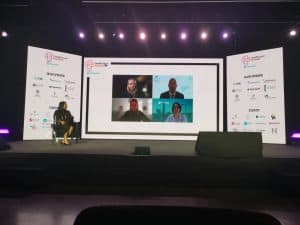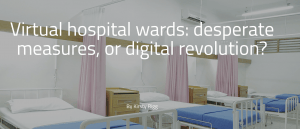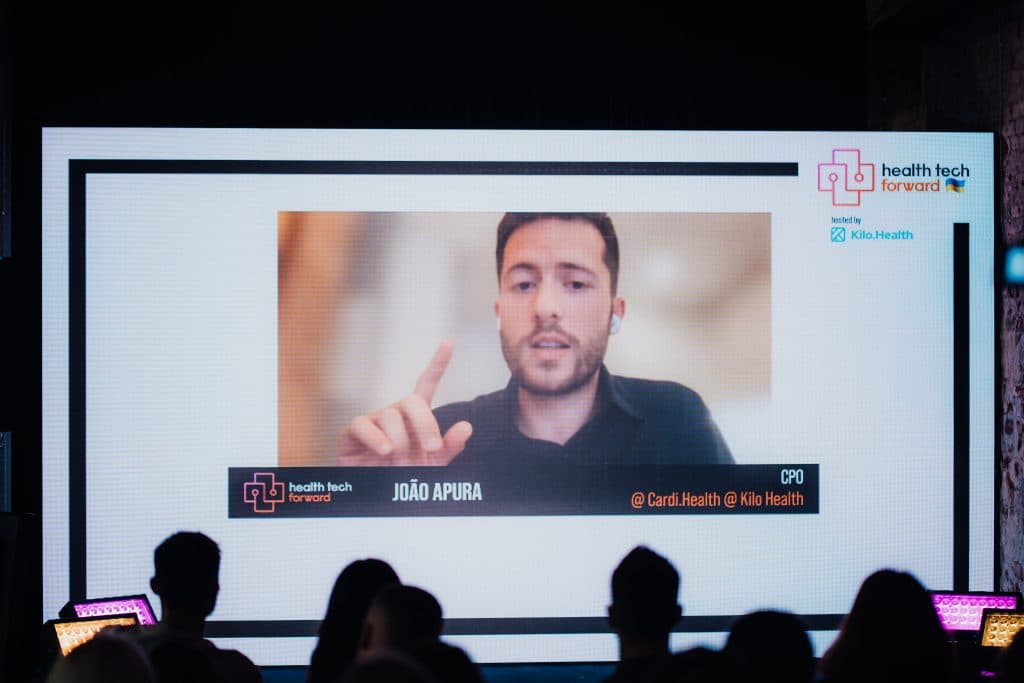Is virtual care a catalyst for improving health equity?

During a key talk at the Health Tech Forward conference, panelists gave their insights into virtual care and addressed the question of whether or not it’s a catalyst for improving health equity.
Deploying virtual care evenly across the board, through varying cultures, languages and ethnic backgrounds is something which bears its own major challenges. During an in-depth and layered discussion at Warsaw’s Health Tech Forward conference, five panelists, significant names in the healthcare and health tech space, shared their insights.
Moderating the talk was Faisal Khan, senior counsel and provider practice lead at Nixon Gwilt Law, an exclusive healthcare innovation law firm in the United States.

Faisal spoke of how the topic at hand was actually what had started his career in healthcare. He said: “Growing up in the Cleveland and Ohio area, I had at my disposal some of the best healthcare systems in the world.
“What is interesting to me as a person of colour is that you can have phenomenal physicians and phenomenal technology, tons of resources without an issue.
“But the question for me is: how does that technology, and how does that value trickle down into under-served populations?
“Virtual care, while we’ve seen an explosion of it over the last few years, especially with the pandemic, how do we deploy virtual care in a way which deploys equity across the board?”
“What are some of the barriers to having that accomplished, and how can we get there?”
Virtual care & COVID-19
Ruth Bradbury, interim head DigitalHealth.London, who has worked in the NHS for 20 years, responded: “It’s important to say that COVID has transformed how we think about healthcare, certainly in England and the UK.
“Prior to 2020, yes digital innovation was happening and virtual care was happening, but the pandemic has accelerated that.
Uptake of virtual consultations
She added: “We’ve seen the uptake in virtual consultations and we’ve watched them become commonplace for patients across the board.
“There are challenges still, as there are patients who would like to see someone in person. So our challenge is simply, how do we get the balance right? How do we offer an efficient virtual delivery of care, whilst still maintaining that relationship between patients and clinicians?
“How do we get the balance of incorporating remote monitoring, alongside a hands-on approach to patients?
“There are also challenges with our innovators. Are they getting things right? Are they looking at people with different needs, such as people with a disability, in terms of how they access technology?
“Are we thinking about needs in terms of people’s ethnic backgrounds, their gender, their sexuality, so that’s something on our program that we’re really keen to work with innovators so they get that right first time.”
How health equity can look different
Jenny Wüstner, communications & partner engagement at G4A, works with early-stage to late-stage digital health companies, offering different, tailored programs to each.
She explained how health equity can actually look very different, depending on where the company may be operating.
She said: “We’re based out of Germany but we operate globally. This is usually a huge challenge for the different digital health companies to scale.
“Most of the innovations from the USA try to scale in the US first, and when they want to enter the European market, that looks completely different.
“This is something that we try to support them with, to look into market access, how the different markets look.
“Looking at the teams is really important for us.
“Embed equity” in product development
‘We also tell these digital health entrepreneurs to already embed equity in their product development. This means looking at technology, and looking at the bias you can have in algorithms. This goes hand in hand with having a more diverse team when you develop different technologies.
“We are really aware of building products which are made for different patient and consumer groups. This is super important, especially when you look at the global scale.”
Mental health support in native tongue
Jenny added: “It’s also important how we talk to different communities, how we promote our products and solutions. When it comes to marketing and promotion, having different languages in your product .
“People having mental health support in a digital form should have access to it in their local language. We all know how expressing feelings and emotions in your own mother tongue is something totally different.”
Reena Sooch, head of digital and connected health at IPSOS, was the only panelist to be physically present, and addressed the crowd from the stage.
She opened up the topic of behaviour changes in adopting tech, and how there is still a need to “level the playing field”.
She said: “The pandemic has accelerated behaviour change in adopting tech, but the reality is, stil today the majority of doctors pick up the phone, rather than using a video based tool.
“We still don’t have data streams coming through, being used during a consultation. Patients who are proactive and health literate, and have financial capability, are aware of apps, take data from apps and use them in their consultation.
“I feel there’s a long way to go to level up that playing field.
Get your design right
She added: “Design matters. Everything my colleagues have said on the panel is spot in. Be intentional – get your design right.
“We do research with apps and platform providers day in, day out. Only now have we started to stipulate that we need to have individuals from different backgrounds involved in the app test.
“This means someone who is not a native English speaker, someone whose literacy level is not degree level.
“Across Europe, the average age of literacy for an adult is the age of 11. If an 11-year-old can understand the content on your platform and app, then you’re on the right track. Yet, often that’s not the case”.
Getting your platform embedded into a health system
Reena continued: “Every commissioning group decides how things get deployed. So you’re not talking to one entity.
“You will have to go off and talk to several entities to get your platform adopted and embedded within a health system.
We have to really think about how we work with policy makers – and continue to showcase success and examples.”
Virtual option in a primary care shortage
Gretchen Zimmermann, senior director of cardio-metabolic care and prescribing at Vida Health, pointed out that the US has a shortage of primary care providers, and shared her insights into the role virtual care might play, including with mental health.
She said: “In the US there is a shortage of primary care providers and this is evident to anyone who has tried to make an appointment and waited – before being in and out in 15 minutes.
“The issue with that is, so many people have multiple conditions, or have chronic conditions such as diabetes. You often have physical health as well as mental health. Things like high blood pressure, high cholesterol, and then depression and anxiety.
“Certainly we’ve seen rates of depression and anxiety surge during COVID, and it continued after.
“We are seeing that people are talking about it more, and maybe starting to remove the stigma which is seeded in the treatment of it, but still people are reluctant to bring it up.
“Even if they do, in a primary care setting, 80% of primary care providers are going to prescribe medication and not necessarily refer them to the behavioural health treatment that they need.
It’s the same with diabetes. Not all care providers are training or comfortable dealing with complex conditions.
Virtual care model
“I can see that the biggest benefit is in triaging people into primary care within a virtual care model, it could be starting there and then getting them to the special care that they need.”
“The biggest gap in the US is giving people access to primary care and starting to break down some of those models and triaging them to speciality care. We’ve started to see good success with this at Vida.”
Don’t miss…






